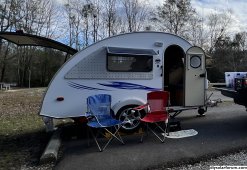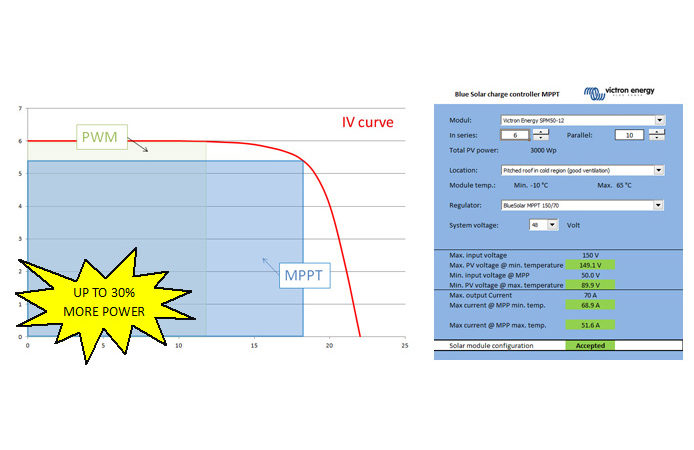If you want to buy a good quality converter and wont have to eat ramen then go for it. But from what ive gathered in this thread you are focusing on the wrong problem. You kind of got tricked and dont realize yet that the converter is not as bad as you think.
Problem 1. WFCO doesnt go into 14.4v.
Since you have solar this problem somewhat gets solved. Check your solar controller manual to make sure its set for flooded batteries. You can get fully charged before a trip. During the trip im not sure a new Victron charger will change anything for your particular situation. Some campers are only allowed to run generators during certain hours. I remember reading about a guy who loved his new high power charger because he could pump a lot of juice in the small amount of charge time. If you are on shore power then a new charger wont help. Your high draw items like an electric heater or electric water heater will most likely be covered by the available 120v source. Or propane. Im trying to focus my trailer towards electric instead of propane. But wow how ive come to respect how much stored energy is inside a portable 5g propane tank!!
Problem 2. WFCO is only charging at 9a.
This is where you are getting tricked in a way. Its true a new converter will fix this problem, but is it a problem? There are thousands of trailers just like yours with people who dont have a clue their batteries are not fully charging. Because the silly WFCO only charges to 13.5v or whatever the exact number. Thin charge wire only makes it worse. Good news is the WFCO will push more power. Drain the batteries down lower. So that when the charge starts the batteries are still below 13v. You will most likely see a charge closer to 50 amps. Guessing you are using a clamp meter? Or maybe your battery monitor.
Its a trailer and you have solar to get you to 14.4v. I think it would be rare when you found yourself in a situation where your batteries were dead because the WFCO puts out 50a instead of a better charger at 100a. I agree not going to 14.4v is a problem. But you have that solved with solar. If i had a teardrop trailer i think i would put more focus towards stored battery power. I picture you out in the forest with tons of shade. Hiking in the rain. Would be cool to have peace of mind knowing you have a ton of battery powered stored. Dont need the sun or shore power or a genny. I think your GC batteries are new huh? Ok so screw that idea. I get the feeling you are going to take good care of them. One of the few guys who has tested SG.
If it was my trailer and brand new 6v i would probably figure out a way to do equalization. Maybe check your solar controller manual. Some do it automatically. Which to me would suck!!! What about all your other 12v items? Ive got a bunch of 12v Noctua fans that are already a very high RPM. Sending them 16v is just dumb. I hate when my trailer goes into 14.4v mode. Ive got unregulated LEDs. Its very bad for them to see 13.5v let alone 14.4v. To equalize you have a few options.
1. New high quality solar controller. Can add panels down the road. Will equalize hopefully i think 100w would be enough. Might look into a way to tilt the panel when the trailer is parked. I get 8a from a 150w panel flat on my roof when the sun is shining, and da weather is sweet. It honestly makes me want to move my dancing feet

2. Use a 12v car charger on a 6v single battery. Not safe and only a dum dum would do this. (waves) p.s. 5a is a good rough starting point. Takes hours to get to 8v if your batteries are healthy. If i remember right i think the last time i did that i never got to 8v.
3. Buy a new multi purpose charger that can do lithium, flooded, and most important has an equalization mode for 6v. Will come in handy down the road for cars or trailer batts.
One last thing dont be afraid to use those batteries. The trojan website had a graph that showed the capacity actually goes up during the first 100 cycles. Think about the majority of campers. They dont go camping for 100 days in the 6 or so years the batteries last. Kind of weird to think about. Best thing you can do is dont leave them on that solar float 24/7. Especially during summer temps. Also dont use solar for your main way to charge. The flooded batteries need a big strong charge to keep the plates happy.
Oh one other last thing. You want to disconnect the solar panel from the solar controller before you play around with the batteries. I didnt know that when i first got my trailer. I keep meaning to add a switch to the positive lead coming down from my panel. For the last 4 years ive just used a big blue wire nut and short piece of wire. I disconnect my solar panel from my 6v all the time because there is no need for it to get a 14.4v charge every morning if they are not being used. Even worse on hot summer days because my solar controller does not account for battery temp.




